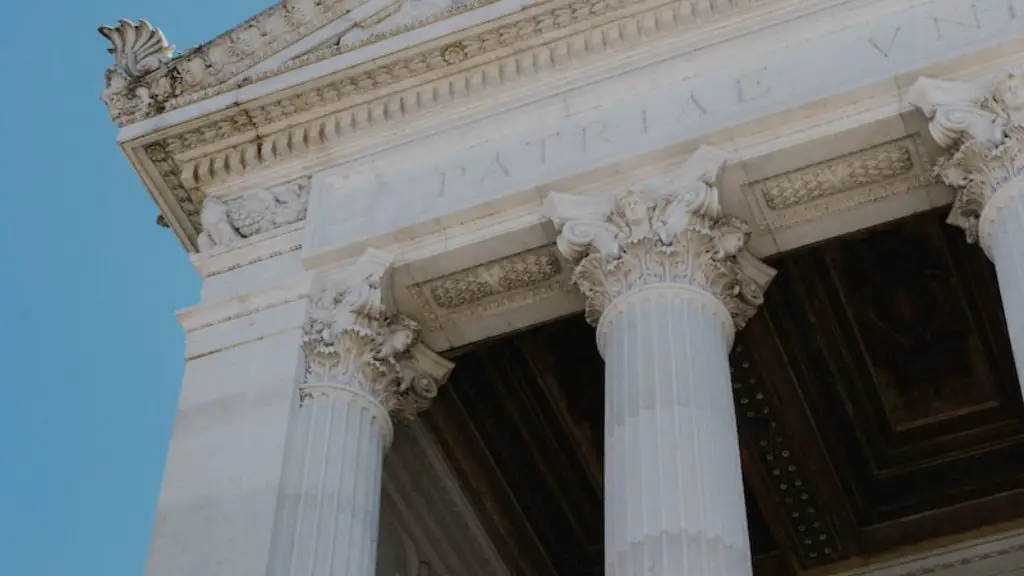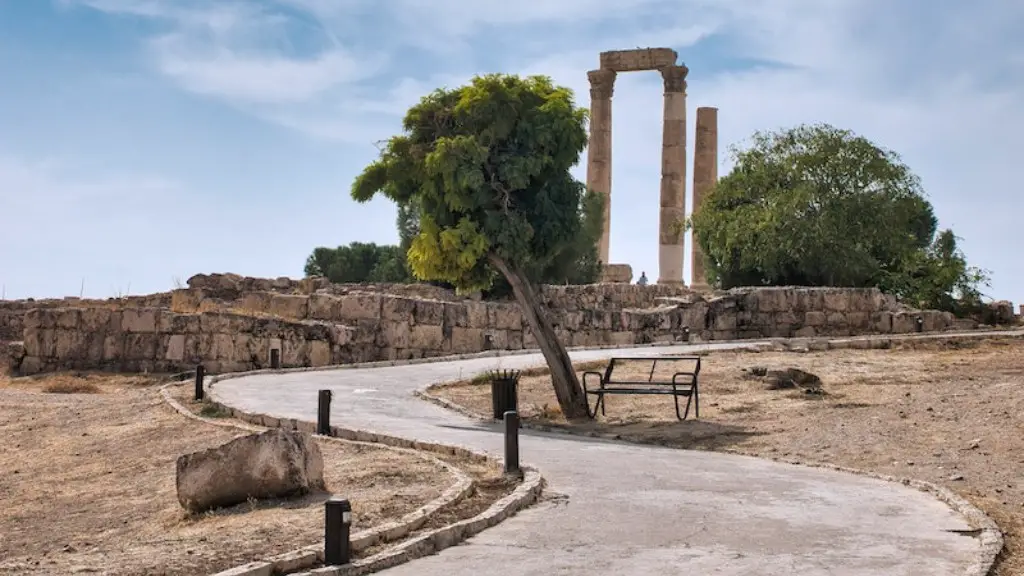There is much debate surrounding the question of whether or not slaves in ancient Rome had any rights. The Roman legal system, as well as the society at large, was built around the concept of hierarchy in which some people were seen as being more equal than others. In general, it was believed that slaves were not entitled to the same rights and protections as free citizens. This was reflected in the law, which stated that a slave was the property of their owner and could be bought, sold, or abused at their owner’s discretion. However, there were some provisions in the law that offered slaves some protection, such as the prohibition of killing a slave without just cause. Additionally, some slaves were able to earn their freedom through their hard work and loyalty to their owners. While they may not have had all the rights of a free person, slaves in ancient Rome did have some protections under the law.
There is some evidence that slaves in ancient Rome were granted certain rights, although the extent and nature of those rights is debated by scholars. Slaves were typically owned by wealthy citizens and were used for labor, as well as for sexual and personal services. Many slaves were captured in war or purchased from slave traders, and thus came from different cultures and had different levels of education. Slavery in ancient Rome was not based on race, but rather on a person’s legal status. There were also a number of ways for slaves to earn their freedom, although this was not always easy.
What were slaves allowed to do in Rome?
Slaves were an integral part of the Roman economy and worked in a variety of settings. They worked in private households, in mines and factories, and on farms. They also worked for city governments on engineering projects such as roads, aqueducts and buildings. Slavery was a brutal institution, and slaves were often treated harshly. But some slaves did manage to gain freedom, and some even rose to positions of power and influence.
A slave who had enough money could buy his freedom and the freedom of a fellow slave, frequently a spouse. However, few slaves had enough money to do so, and many slaves were not allowed to hold money. Slaves were also freed through testamentary manumission, by a provision in an owner’s will at his death.
How did Romans treat female slaves
Women in ancient Greece could be honoured for their role as priestesses or as members of a family. They had some citizen rights, but they were not as extensive as those of men. Slaves, by contrast, had no legal or social standing at all and could be treated as beasts of burden by their masters.
Voting for most offices was open to all full Roman citizens, a group that excluded women, slaves and originally those living outside of Rome. This meant that a large portion of the population was unable to participate in the political process. However, this began to change over time as the franchise was extended to more and more people.
Who could own slaves in ancient Rome?
Public slaves were owned by the Roman government and might work on public building projects, for a government official, or in the emperor’s mines. Private slaves were owned by an individual and might work in the household, on the farm, or in a workshop.
While slavery never completely disappeared from ancient Roman society, its position in the Roman economy shifted at the beginning of the period called Late Antiquity (14 CE–500 CE). At this time, the slave system of the Roman world adjusted to a new category of labor. This new labor force was made up of people who were not Roman citizens and were not free. They were brought to Rome as prisoners of war or bought from slave traders. These slaves worked in mines, on farms, and in households. They also fought in the Roman army.
Did Romans marry slaves?
A:
Slaves had no legal rights in ancient Rome, which means they could not marry. However, if they had a partner, they would be entitled to establish a domestic family unit. Even though the children would be owned by the slave’s master, this would still allow the slave some measure of stability and companionship.
It is interesting to note that the large number of educated slaves in Roman society were trained in a variety of ways, from self-education to instruction in formally organized schools within the larger households. This shows that even in ancient times, education was seen as an important aspect of society, and that those who were considered “less than” were still given the opportunity to learn.
How were freed slaves treated in ancient Rome
Manumission was a legal process in Ancient Rome that freed slaves from their bondage. Freedmen were then granted freedom and rights through this process. There were three main legal forms of manumission: Manumissio Vindicta, Censu, and Testamento. Each form had its own requirements and procedures.
Manumission was a important part of Roman society as it allowed for slaves to be freed and become contributing members of society. This helped to create a more equal and just society. Manumission was also an important part of the Roman economy as it provided a source of labor for businesses and households.
If you are interested in learning more about freedmen in Ancient Rome, there are many resources available. You can start by doing a search online or by visiting your local library.
Adopting an ex-slave had some advantages in the lower classes of the Roman world. One advantage was that the adopter could take over properties of the freedmen under the adopter’s control. However, the freedman as the adoptee had a limited status compared to the freeborn adoptee.
What were slaves not allowed to do in Rome?
Enslaved people in Rome were treated as property and had no personal rights. They could be bought, sold, and mistreated at will, and were unable to own property, enter into a contract, or legally marry. Life was very hard for the enslaved, and they were constantly at the mercy of their masters.
All the children born to slaves were also considered slaves and were the property of their masters just like their parents. The children born to freed slaves were, however, considered free with the full rights of a Roman citizen. This meant that they could own property, vote, and even serve in the military.
How often were Roman slaves freed
From this study, it appears that age plays a significant role in determining whether or not a slave or freedperson in Roman Egypt was likely to have been freed. Those under 30 were much more likely to have been freed than those over 30, with 83 percent of those under 30 having been freed. This may be due to the fact that younger slaves and freedpersons were deemed more likely to be productive and have value to their owners than older ones.
The ancient Romans had a very different view on marriage than we do today. For them, marriage was not about love or even companionship. It was about continuing the family line and ensuring that there was someone to take care of the household and property. Because of this, marriage was seen as a very practical arrangement and was not always a happy one.
In Rome, marriage was strictly a monogamous institution. A Roman citizen by law could have only one spouse at a time. The practice of monogamy distinguished the Greeks and Romans from other ancient civilizations, in which elite males typically had multiple wives.
For the Romans, marriage was not just about two people but also about two families. Families played a large role in arranging marriages and often did so for political or economic gain. Marriages were also seen as a way to strengthen alliances between families.
Although love was not the main reason for marriage, it was still important. The Romans believed that marriage should be between two persons who were attracted to each other and who would be compatible in terms of lifestyle and interests.
What was the consent age in ancient Rome?
The age of seven was picked out by lawyers as the minimum age for consent. This means that all parties needed to be old enough to understand what was being done and the nature of consent to marriage. If either party was below the age of seven, then they could not give their full and informed consent to the marriage.
The Roman slave trade was very profitable and slaves were in high demand. Slaves were owned by both rich and poor Romans and their status varied depending on their owner. Some slaves were well looked after and had good jobs, while others were treated very harshly and worked in difficult and dangerous conditions. Overall, the life of a Roman slave was very hard and their chances of being freed were very low.
Conclusion
Slaves in ancient Rome were property of their masters and as such had few if any rights. They could be bought and sold, beaten and abused at the whim of their owner with no legal recourse. Some slaves were able to work their way to freedom, but the life of a slave was generally one of hardship and suffering.
No, slaves did not have any rights in ancient Rome. Slavery was an essential part of Roman society and the economy, and slaves were considered property, not people. They could be bought and sold, and their lives were entirely controlled by their owners. Slaves had no legal protections and could be treated harshly, even cruelly. If a slave committed a crime, their owner would be held responsible, not the slave.




